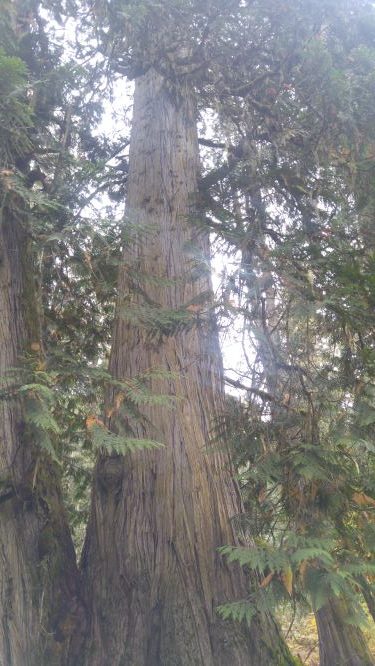As an Ontario native fairly new to the north not only was Dr. Bjork’s presentation enlightening in regards to his scientific material but also in terms of novel facts about British Columbia. I’ve lived in this province twice prior to embarking onto graduate school although neither one of my past residents offered such close proximity to remote and isolated areas as living in Prince George does (both of my prior B.C. accommodations were in Vancouver for work related purposes). I’ll admit that the weekend following Dr. Bjork’s presentation I took off to visit the ancient forest to see the grand cedars (and lichens of course) for myself. I listened to Dr. Bjork’s presentation less as a student and more so as tourist listening to a tour guide eagerly jotting down locations mentioned so as to visit them myself. Some of the more (personally) notable things Dr. Bjork mentioned were the fact that B.C. has the largest selection of flora nationwide and that the Robson Valley has no particular dry season (a fact reiterated along the ancient forest boardwalk) because of the year-round run off from the mountains.
Speaking to the relevance of Dr. Bjork’s lecture in regards to my own studies one aspect of his work did stand out, the “controlled intuitive wander.” For my thesis I will be assessing the accessibility of British Columbia’s protected areas in partnership with Access B.C. and it will inevitably involve touring some protected areas near the Okanagan Valley. Foregoing academic articulation for a moment, I liked the term because it seemed to give scientific credibility to simply walking around and frankly I anticipate using this phrase in my work somewhere in the methods section when trying to scientifically describe hiking.
Regarding the presentation itself, I think Dr. Bjork’s excitement and charisma made for a much more engaging presentation as is usually the case when the presenter is passionate about their topic; because of his almost giddy persona certain tidbits of information such as the fact that lichens are fussy about pH levels or that a cliff can be considered a “specialist habitat” had a greater lasting effect than had he simply droned on apathetically. He engaged the audience through humor whimsically telling of his excitement upon seeing limestone. I found myself not only taking notes about his lecture but also about how he lectured, his body language and style of presenting all of which are relevant to our upcoming presentations in NRES 700. In conclusion, even though his dryer material may not have been relevant to my academic studies personally, his presentation offered a charismatic and engaging introductory on being just that, charismatic and engaging.


Recent Comments